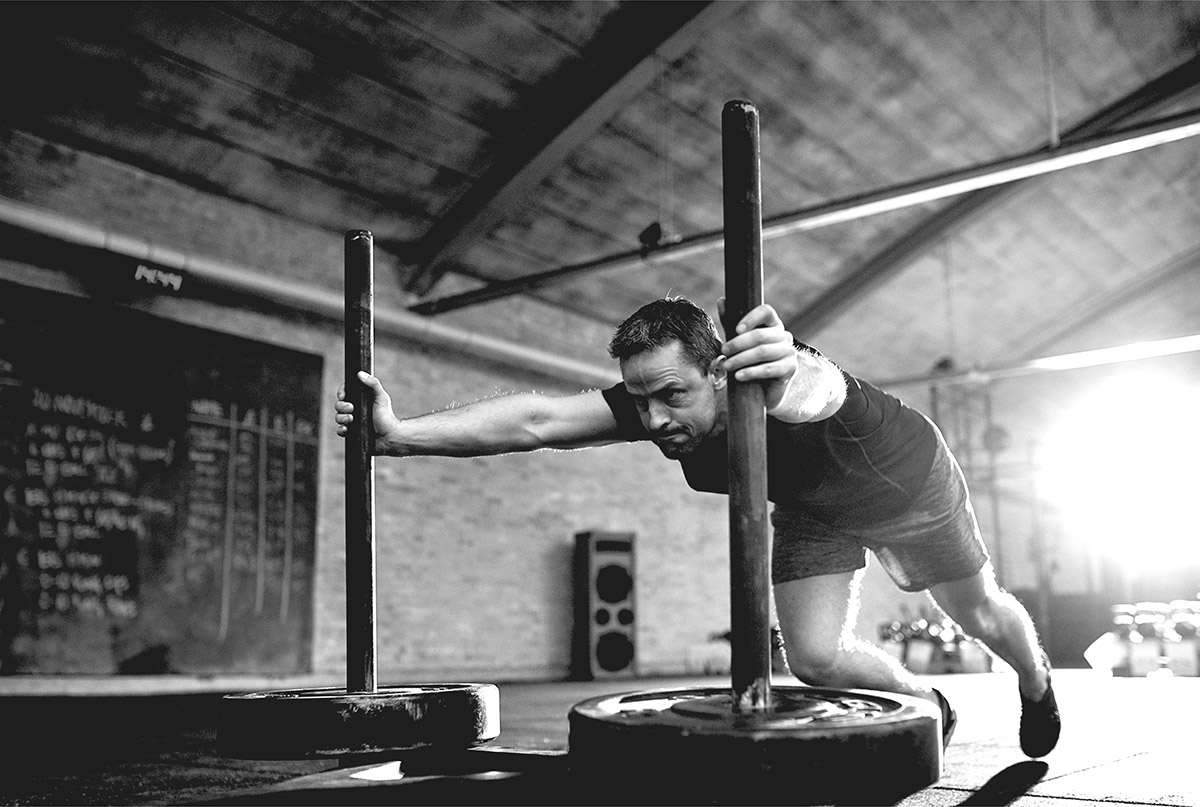
GET SHREDDED: The Right Way To Get Lean
To get really lean, you’ll need High Intensity Interval Training (HIIT). Here’s how to do it right.
BY JAY JOHNSON
When you think about your body and how it operates, do you give it enough credit? Probably not. Our bodies are well-equipped machines that in most cases simply need a tune-up or an oil change to achieve peak performance. In our case, that means revving up our metabolism, burning fat, and looking and feeling our best.
When the body performs more traditional forms of cardiovascular exercise such as walking, running, or cruising on the elliptical for an hour at a time, this conditions the body to burn fuel (calories) in that moment. During consistently moderate or even low intensity cardio sessions with little variation in heart rate (Low Intensity Steady State or LISS), the body is able to get you through this with a reasonable little increase in caloric burn throughout the event. This is great for a direct calorie burn that you can see instantly on your equipment or watch screen, but that burn stops abruptly once you finish the workout.
Those who enjoy counting caloric expenditure thrive on the instant gratification that number provides. Can this be a satisfying form of tracking exercise along with the feeling of progress it provides? Of course. But is it the most efficient to burn calories? Absolutely not.
But to really look and feel your best, you need to train your body to burn calories at a higher rate throughout the day—even, or especially, when you’re at rest.
The goal is to tune your body to use its self-equipped “automatic transmission” along with the manual aspects of controlling your workout intensity to accelerate your heart rate during activities. The way we do this is by introducing High Intensity Interval Training (HIIT), which means adding in periods of intense sprinting throughout your workouts. Cruising is nice, but sometimes the pedal must hit the metal for a faster road to success.
The heart will always rise and fall to accommodate the amount of intensity our activity level requires, but just as your heart rate jumps up it also must be brought back down to normal upon completion of the workout. This is all controlled by the autonomic nervous system (ANS) which functions just as it sounds, automatically. When your workouts consist of one initial intensity spike, there’s not much requirement on your ANS to tell your heart that the work is over and therefore your body can more easily adapt and get you to the finish line.
When we take that same workout and add in intermittent bouts of high intensity effort—whether this happens via moving at higher speeds or with higher resistance—the heart works harder. Once each short sprint concludes with a sudden drop back down to a reasonable intensity, the heart is signaled to pull your pulse back down to normal as efficiently as possible.
Repeating this process not only pushes your body’s comfort zone by increasing your heart rate beyond what you are used to, but it conditions your ANS to pull your pulse down more quickly over time.
This form of training creates more head-to-toe blood flow with what is called Pulmonary Heart Activation Training (PHAT) which means there is more of a demand placed on the heart to provide sufficient blood flow to the entire body. The heart would prefer to be primarily responsible for one region of the body at a time, such as the legs with walking or the upper body with rowing.
By requiring more of your heart in this manner during your workouts, you not only raise your overall burn within that session but you also increase the need for recovery after the event. Once the body is in recovery from each workout of this intensity, more oxygen is needed to bring you back stronger in time for your next workout. This increase in oxygenic uptake by the body is known as Excess Post-Exercise Oxygen Consumption (EPOC), and guess what? This process also causes an elevation in caloric burn during this recovery period in-between workouts.
Have you ever had an intense day of running around with the kids, taken a long hike, or spent an entire day swimming at the pool…then finding yourself starving for food even a day after the fact? Congratulations, you were experiencing an increase in EPOC levels and therefore craving excess calories to replace those being burned as a result of activities that took place hours or even days prior. When your workout regimen is designed to consistently tap into and develop your “automatic transmission” and create this effect, you can pair this with a healthy nutritional format that will in turn cause weight loss. When you are eating the correct amounts to of food to fuel your activities allowing that carryover burn to tap into your body’s stored energy (body fat), you have officially tuned yourself to become a fat burning machine.
There are countless ways to burn calories as literally every movement we perform in life does this, but a little direction and appreciation for what the human body can do for you must be present. You would never fill your car up with fuel only to store a surplus of it in your trunk, so why do that with your body?
Eat the macronutrients necessary to get you through your typical day and now your hopefully more atypical workouts, and no more. Hit your conditioning sessions in a way that force your heart and both your manual, and now automatic transmission as well to work harder for you and create a burn-friendly environment for results.
The summer months are hot, but with these simple tweaks to your program, you can have a body to match.
Jay Johnson is available for questions, guidance and workout/nutrition programming customized to fit your daily life and needs. Contact him at info@jayjohnsonmlp.com or you can see our Team MLP Training Options at teammlp.com.

